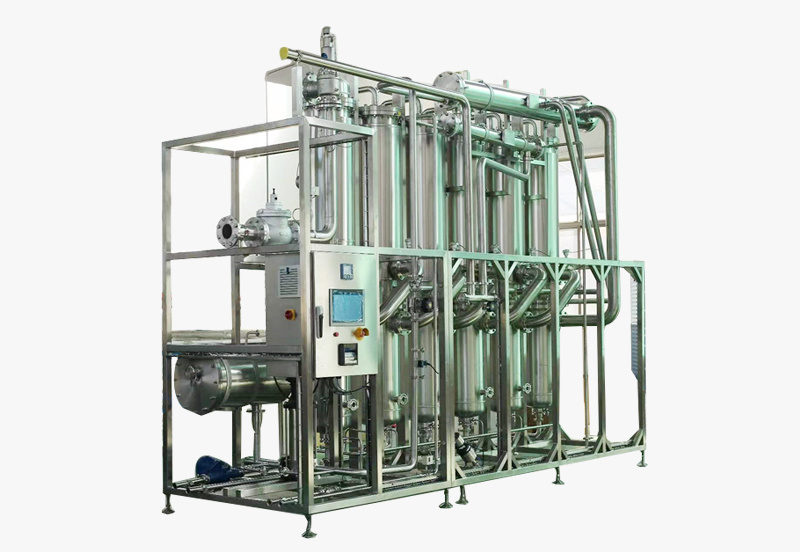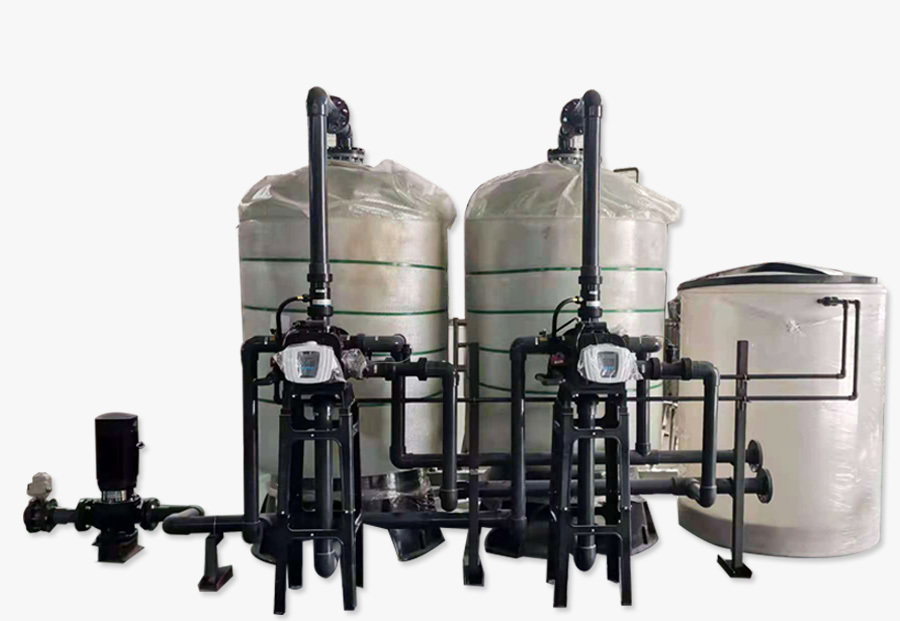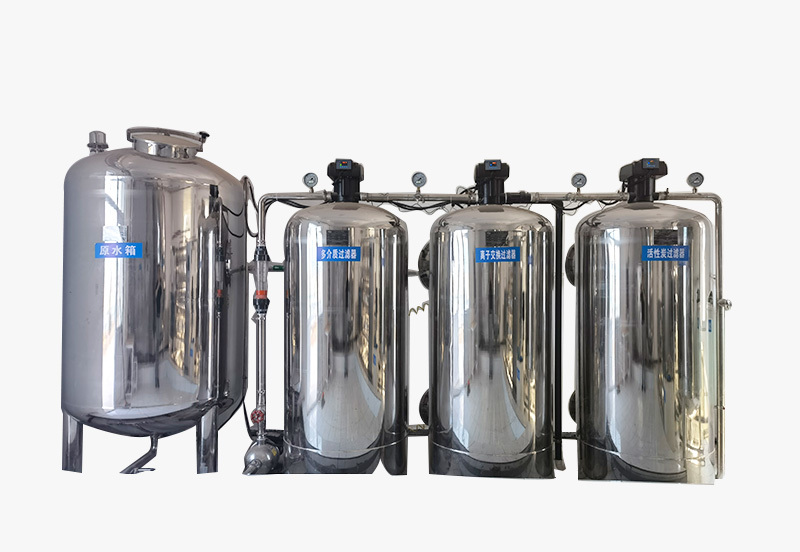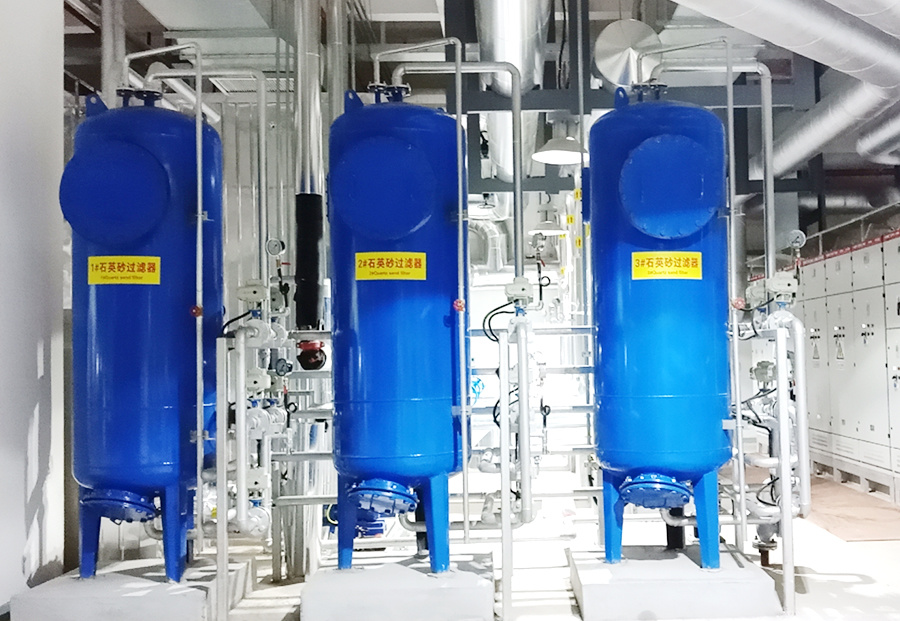What is severe fouling of reverse osmosis membranes?
Category:
Time of issue:2021-12-06
Reverse osmosis membrane elements, as a deep filtration method, inevitably have colloids, microorganisms, impurity particles, and the precipitation of sparingly soluble salts remaining on their surface. Therefore, reverse osmosis devices used in various fields ultimately require cleaning once put into use, only differing in the length of the cleaning cycle. However, online cleaning, as a means of cleaning, maintenance, shock sterilization, and regular protection of reverse osmosis systems, is powerless when faced with severe pollution of reverse osmosis membrane elements. At this time, offline cleaning of the reverse osmosis membrane elements is required.
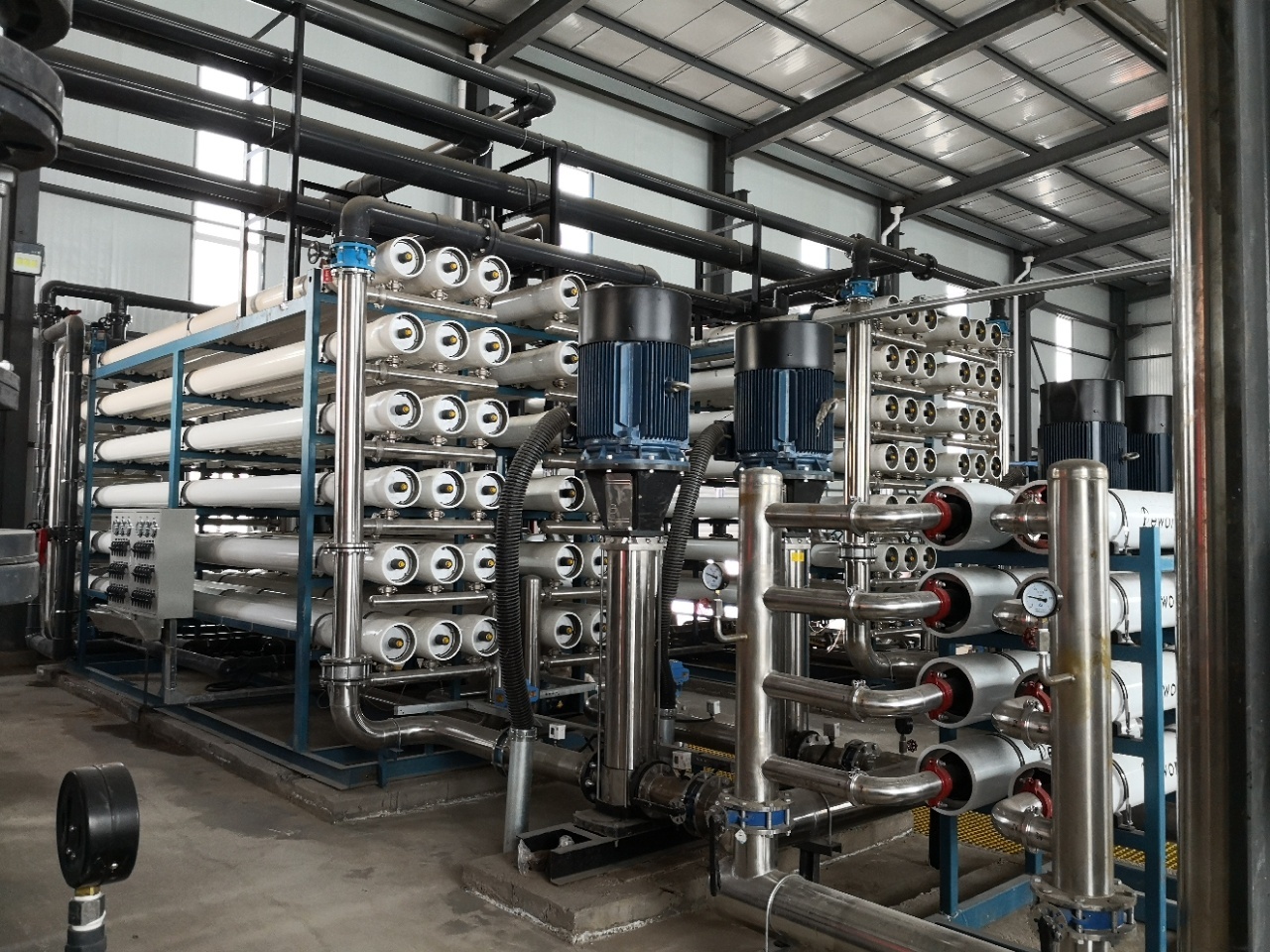
Although the design of reverse osmosis systems includes a certain degree of redundancy to ensure that in emergencies, the insufficient water supply due to the decrease in water production or desalination rate of the reverse osmosis system and the increase in pressure difference does not threaten safe production, in reality, it is precisely because of this redundancy that sometimes hidden faults cannot be manifested in time, which may eventually lead to severe pollution of the reverse osmosis membrane elements.
The concept of severe pollution of a reverse osmosis membrane element refers to the surface adhesion and deposition pollution of the RO membrane caused by suspended solids, colloids, organic matter, microorganisms, and other particles contained in the reverse osmosis system feed water, or the generation of chemical scales caused by the accumulation of ions on the membrane surface due to factors such as concentration polarization, where the ion product exceeds the solubility product. Severe pollution refers to situations where the single-stage pressure difference after pollution is more than twice the single-stage pressure difference value at the initial operation of the system, the water production of the reverse osmosis system decreases by more than 30%, or the weight of a single reverse osmosis membrane element exceeds the normal value by more than 3 kg.
Severe pollution is often the superposition of severe physical pollution and severe chemical pollution. In some cases, the two coexist.
Reasons and characteristics of severe pollution of reverse osmosis membrane elements: Due to the different water quality of water sources in different regions and the different treatment methods adopted, the reasons for RO membrane element pollution also vary. Common pollution reasons and characteristics include the following: 1 Design and manufacturing defects of the water treatment process system
① For reverse osmosis pretreatment filters, when the source water is not well water, the equipment filtration rate is greater than 8.5 meters/hour, while for surface water, the equipment filtration rate is greater than 8 meters/hour, resulting in an excessive SDI of the reverse osmosis feed water;
② The source water contains colloids and suspended solids, and there are no removal measures in the design;
③ COD in the source water > 3 and there are no removal measures;
④ Reverse osmosis membrane elements with excessive design flux in the reverse osmosis device have rapid two-stage scaling and pressure difference increase, rapid water production attenuation, and desalination rate decrease.
The design defects ①②③ above may lead to an increase in the first-stage pressure difference of the reverse osmosis system; ③ may also lead to an increase in the second-stage pressure difference, and all the above design defects may lead to a decrease in the system water production.
2 Improper selection of reverse osmosis additives and other consumables
① Improper selection of the type or dosage of reverse osmosis antiscalants, such as: the type of reverse osmosis antiscalant is incompatible with the source water, for example, the source water contains aluminum ions, iron ions, or iron and aluminum flocculants are used in pretreatment dosing. It is best to choose organic phosphorus-based reverse osmosis antiscalants and avoid using polycarboxylic acid types; the dosage of reverse osmosis antiscalants is generally between 2-4 ppm (calculated based on the inflow), and should not exceed 6 ppm at most. Improper selection of the type and dosage of antiscalants will lead to a rapid decrease in system water production and a significant increase in system pressure difference;
② When selecting reverse osmosis security filter cartridges, it is necessary to ensure reliable quality. Cartridges that are claimed to be 5 microns but do not actually reach that precision are very unfavorable for the safe operation of reverse osmosis membrane elements;
③ Improper selection of flocculants and coagulants in the reverse osmosis pretreatment system will cause serious pollution of the membrane elements, while improper selection of bactericides will cause serious damage to the desalination rate of the reverse osmosis system (containing Cl--).
3 System abnormalities caused by sudden changes in water treatment operating conditions
Generally, this is due to climate change leading to an increase in the content of suspended solids in the source water, or a change in the type of source water (such as changing from groundwater to tap water, leading to an increase in the residual chlorine content in the reverse osmosis feed water), resulting in deterioration of the operating condition of the reverse osmosis device and forming severe pollution.
4 System operation and management problems
① Failure to operate according to operating procedures;
② Failure to adjust equipment status parameters in a timely manner;
③ Improper adjustment of operating parameters;
④ The metering of added chemicals has not been optimized;
⑤ Failure to clean the system in a timely manner when the system reaches the cleaning conditions;
⑥ Failure to calibrate the system on time;
⑦ Lack of operational management summary.
5 Water treatment system water shortage
In addition to the above situations, in many companies, due to water shortages in the water treatment system, even if the reverse osmosis device shows deterioration of operating parameters and system pollution, timely cleaning cannot be carried out due to water shortages, resulting in gradually worsening system pollution and forming severe pollution.
Tags:
Previous:
-- Recommended --
Shijiazhuang Tianwang Environmental Protection Technology Co., Ltd.
Shijiazhuang Tianwang Environmental Protection Technology Co., Ltd. is a high-tech enterprise specializing in the research and development, manufacturing and sales of water treatment equipment.
Contact Information
Production address: No. 9, Fengchan Road, Economic and Technological Development Zone, Shijiazhuang City
Office Address: 25th Floor, Block C, No. 310 Changjiang Avenue, Shijiazhuang High-tech Development Zone
Contact Number:
0311-89272359 0311-68039237
Enterprise Email:
twhbkj@163.com
Website: en.sjztwhb.com



